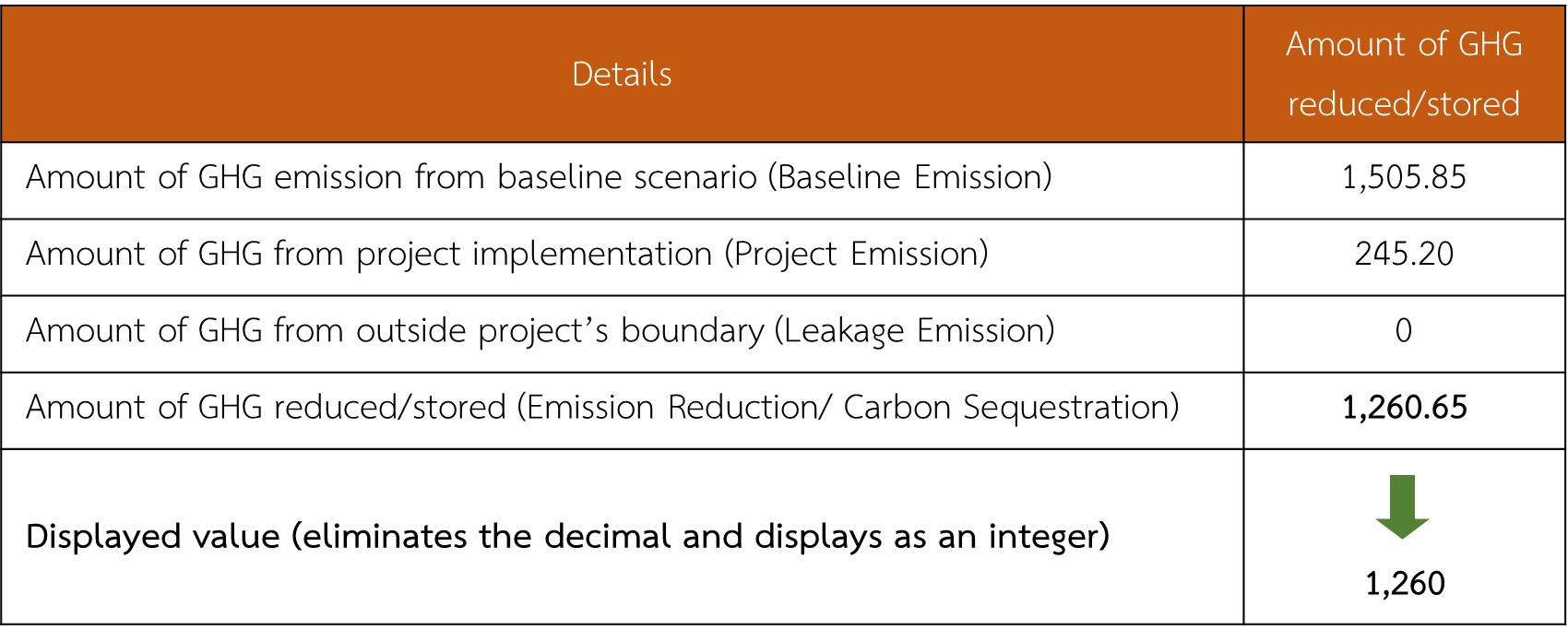The project developer must conduct a Project Design Document (PDD) containing the project details, GHG reduction methodology, calculation of removal/reduction of GHG emissions, project monitoring plan including organizing a meeting with relevant stakeholders
Project Design Document (PDD) includes:
- Part 1 Project description
- Part 2 Greenhouse Gas Reduction Methodology
- Part 3 Calculation of removal/reduction of GHG emissions
- Part 4 Project monitoring plan
- Part 5 Stakeholders’ points of view
- Appendix Relevant document/evidence
- Part 1 Project description
Project details and activities must illustrate an overview of the project activities and the benefits received from the project, such as project activities’ objectives, brief information of the company's operations in relation to project activities, project’s characteristics, operations prior to the implementation of the T-VER project, project’s emission reduction activities, project’s sources and required amount, number of days in operation and the expected amount of GHG emission reduction within the project’s crediting period, double counting, prove of additionality from usual operation (Additionality), right to use the land of the project (only forest and green areas and agricultural projects), risk of emission reduction impermanence (non-permanence risk) (only forest and green areas and agriculture projects).
- Part 2 Greenhouse Gas Reduction Methodology
The project developer must specify the T-VER Methodology and the tool(s) selected, which must be the latest version. Moreover, the developer must specify the reasons for choosing such methodology. In this case, the methodology must be consistent with project's GHG emission reduction activities.
For project’s conditions, several components must be identified and described. There are, the nature of the project activities in accordance with the chosen GHG emission reduction methodology, the rationale for the project which is appropriate and consistent with the project activities conditions as stipulated in the selected GHG emission reduction methodology (if any), supporting attachment and/or completely specify documents/evidence in the appendix, in case of more than one selected methodologies, must specify the project activities that fall into the scope of each methodology.
The project developer must specify the information of baseline scenario and describe the nature of operations before the project implementation and related details that affect the calculation of the amount of GHG emissions from the baseline scenario.
- Part 3 Calculation of removal/reduction of greenhouse gas emissions
The project developer must demonstrate the project's GHG emission reduction calculation which must be in accordance with the regulations and selected tools. For more details, they can be found at http://ghgreduction.tgo.or.th/t-ver
The expected amount of GHG emission reduction that is specified in the Project Design Document (PDD) and the amount of GHG emission reduction indicated in the monitoring and evaluation report must be identified in an integer number. If it is found that the resulting value has fraction, it must be calculate using 2 digits of the decimal. When the final results which are the expected amount of GHG emission reduction and the actual amount of GHG emission reduction are achieved, the result must eliminate all decimal numbers and must be presented as an integer, as shown below;
An example of a numerical display of the reduced/stored GHG emissions.

- Part 4 Project monitoring plan
For project monitoring, the project developer must provide details of the project monitoring plan, visualization of parameters that are required to be monitored (reference values) and parameters that are not required to be monitored according to methodology and selected tool, including the details of the measurement, measuring method, obtaining information, measurement frequency and calculations to estimate the amount of GHG emission reductions.
Project monitoring should be developed into a monitoring plan to enable project developers or project owners to monitor the implementation GHG emission reductions, ensuring that the amount of GHG emission reductions can be measured and verified fully and accurately.
Monitoring Plan contains details of the measurement of parameters, method of measurement or on how to obtain the correct information, measurement frequency including calculation to assess the amount of GHG emission reductions. The monitoring plan must be consistent with the project's GHG reduction protocol and will be reviewed by validation and verification body (VVB).
- Part 5 Stakeholders’ points of view
There must be description of the process for collecting feedback from local stakeholders or those who are affected by the project implementation, summarize the received comments, and explain how all the received feedback is taken into consideration. For example, if it can be improved or added to other areas to mitigate environmental impacts or generate environmental, social and economic benefits.
- Appendix Relevant document/evidence
Project developers can attach documents or relevant supporting evidence such as license for factory operation and factory expansion in Bangkok (Ror Ngor 4), land title, reference research, design costs, equipment or technology certificates from manufacturers, supporting document for calculation, documents supporting the public hearing, etc

 En
En  TH
TH 